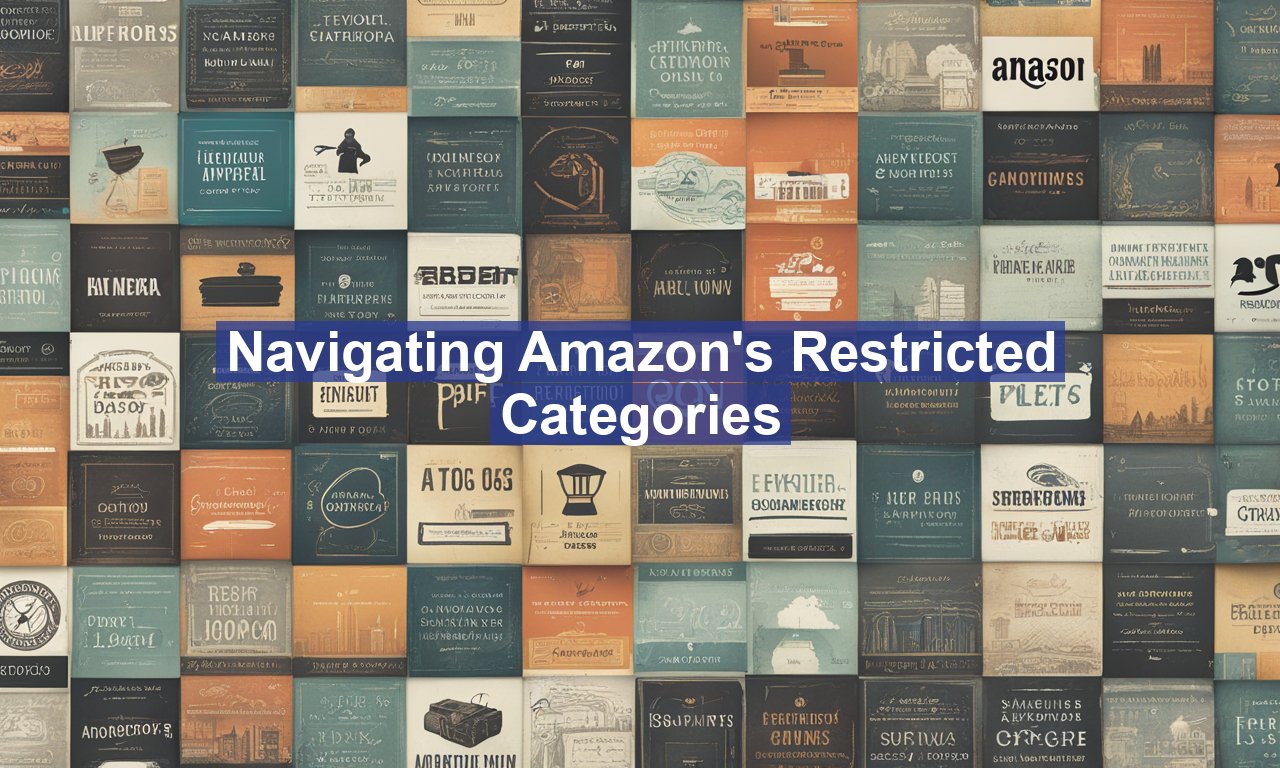Navigating Amazon’s restricted categories Imagine finally submitting your fantastic new product to Amazon, only to discover that it falls into a restricted category. Frustrating, right? Don’t worry, navigating Amazon’s restricted categories is manageable if you know the right steps. This guide will not only save you time but also fast-track your success on Amazon by outlining the strategies and insights you need to conquer these restricted categories.
Navigating Amazon’s restricted categories
Amazon is a vast marketplace, but it’s not the wild west. Certain product categories require approval before you can list your items. Amazon does this for various reasons such as **customer safety**, **legal compliance**, and **quality assurance**.
Why Does Amazon Restrict Certain Categories?
There are several motivations behind Amazon’s restrictions:
* **Safety Concerns:** Products like toys, electronics, and health-related items need additional checks to ensure they are safe for consumers.
* **Legal Compliance:** Categories that involve complex regulations, like pharmaceuticals and alcohol, need additional scrutiny to comply with various laws.
* **Authenticity and Quality:** Ensuring products are legitimate and high-quality keeps customer trust intact. This is crucial in categories like luxury goods or branded products.
Identifying Restricted Categories
Before diving into the selling process, it’s critical to recognize which categories have restrictions. Here are commonly restricted categories:
* **Electronics**
* **Health and Personal Care**
* **Toys and Games**
* **Automotive and Powersports**
* **Collectible Coins**
* **Food and Grocery**
* **Jewelry**
Full lists of restricted categories and their respective requirements can be found in Amazon’s Seller Central documentation.
Steps to Get Approval
The application to get ungated in restricted categories can seem intimidating, but breaking it down into manageable steps can help.
Step 1: Understand the Requirements
Each restricted category has specific requirements that you need to meet. This can include providing invoices from suppliers, compliance certificates, and, in some cases, your company’s trading history.
Step 2: Gather Necessary Documents
* **Invoices:** Collect invoices from reputable suppliers. Amazon typically asks for invoices that are less than 180 days old.
* **Compliance Certificates:** These could include safety standards like CE markings or Food and Drug Administration (FDA) approvals.
* **Business Information:** Make sure that your business profile is complete and up-to-date on Amazon Seller Central.
Step 3: Submit Your Application
Log in to Seller Central and navigate to “Inventory,” then “Add a Product.” If your product falls under a restricted category, you’ll see an option to request approval. Fill in the necessary details and upload the required documents before submitting your application.
Tips for a Successful Application
While the basic steps are straightforward, a few pro tips can dramatically improve your chances of swift approval:
* **Clarity is Crucial:** Ensure that scanned documents are clear and readable.
* **Consistency Matters:** All information on invoices must match the details on your Seller Central account.
* **Double-Check Requirements:** Requirements can vary slightly between categories; always refer back to Amazon’s guidelines to ensure nothing is missed.
Common Pitfalls to Avoid
It’s just as important to be aware of what might derail your application:
- **Incomplete Documentation:** Missing documents or incomplete information can lead to delays or denials.
- **Low-Quality Invoices:** Handwritten or unclear invoices are often rejected. Stick to computer-generated ones.
- **Non-compliance:** Products not meeting safety or standard requirements will face rejection. Always ensure compliance before application.
Next Steps After Approval
Congratulations, you’ve navigated the labyrinth! What happens next?
Listing Your Product
Once you have your approval, you can list your product in the restricted category. Ensure that your listing provides comprehensive information about your product’s features, benefits, and compliance certifications. Top-quality images and descriptions can significantly enhance your listing’s visibility.
Leveraging Enhanced Content
Amazon offers enhanced content options like A+ Content Manager and Amazon Brand Registry that can make your product stand out. Make sure to utilize these tools to their full potential.
Continuous Compliance
Securing approval is not the end; compliance is an ongoing process. Regularly review Amazon’s policy updates and make sure your listings always adhere to their guidelines. Frequent monitoring can prevent potential issues from escalating.
Monitoring Customer Feedback
Customer feedback and reviews are the lifeblood of your success on Amazon. Keep a close eye on what buyers are saying about your products. Address concerns promptly and use feedback to refine your offerings continually.
Conclusion
Navigating Amazon’s restricted categories nandling Amazon’s restricted categories might seem daunting at first, but with the right strategies and resources, it becomes an achievable task. By following the steps and tips shared here, you’re well on your way to listing your products successfully and legally.
For more detailed information, check out Amazon Seller Central’s official guidelines on restricted products and categories. Explore additional brand registry benefits on Amazon here. If you need more insights, This Forbes article also offers some valuable advice on succeeding as an Amazon seller.
Remember, perseverance and meticulous attention to Amazon’s guidelines are the keys to unlocking these restricted categories. Happy selling!


